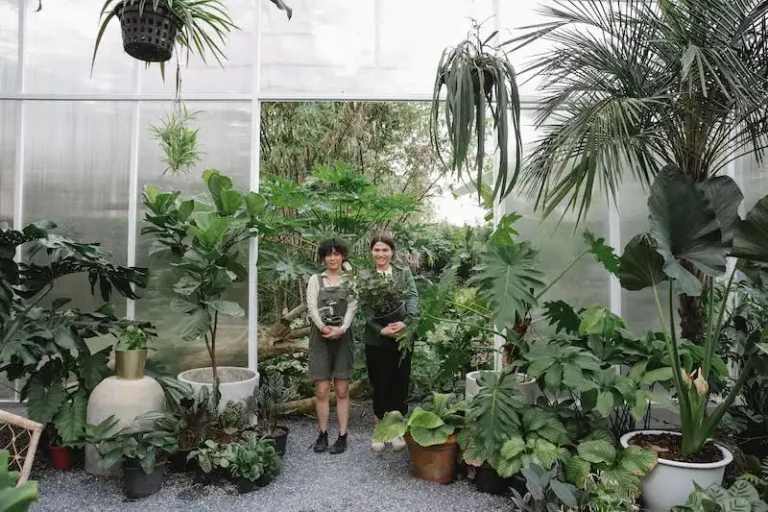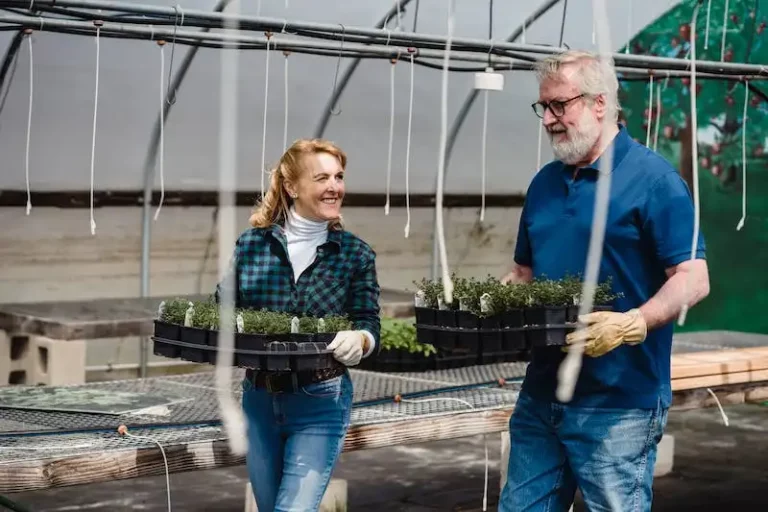Growing your own vegetables is a rewarding and delicious way to care for your garden. Celery is one of those crops that even the most novice gardeners can successfully grow. Not only do celeries provide edible stalks that are packed with nutrients, but they’re also very versatile in cooking. Whether you’re using them in a recipe or eating them raw, celeries make a great addition to any meal.
If you’re new to planting celeries, it’s important to learn a few simple tips to ensure that your plants grow properly. Celeries are cool-weather vegetables, so it’s best to sow the seeds indoors during early spring. Once the plants have grown to about six inches tall, they can be moved outdoors. Plant them in a sunny spot with well-draining soil, and be sure to give them enough space to grow. Celeries are also great companion plants and can be grown next to other vegetables like carrots and tomatoes.
One of the most important things to know about caring for celeries is that they need proper watering. Celeries require a lot of moisture, so be sure to water them regularly. They also benefit from side-dressing, which involves adding compost or other organic matter to the soil around the plants. This provides the celeries with extra nutrients and helps them grow strong. Celeries are prone to certain problems, such as limp stalks or pink roots. In order to combat these conditions, it’s important to learn how to properly care for your plants.
When it comes time to harvest your celeries, you’ll want to wait until the stalks are about six to eight inches tall. Using a sharp knife or shears, cut the stalks about one inch above the ground. Be sure to leave the leaves attached to the stalks, as they help keep the celeries fresh. After harvesting, you can store the celeries in the fridge for up to two weeks. Another option is to store them in a cool, dark place with their roots wrapped in damp paper towels and placed in plastic bags. This method allows the celeries to stay fresh for several months.
In conclusion, growing and harvesting celeries is a simple and rewarding process. With proper care and attention, you can enjoy homegrown celeries year-round. Whether you’re using them in recipes or enjoying them raw, celeries are a delicious and nutritious vegetable that everyone should try growing in their garden. Thanks to their versatility and companion planting abilities, celeries are a must-have for any gardener.
MSU Extension
In the variety of celery, the year of planting and the side-dressing all play a significant role in determining the optimal time for harvesting. Celery is a vitamin-rich vegetable that won’t become the same plant as the year before, whether you plant it from a seed or from a stalk tip. Therefore, it’s important to understand the requirements for growing celery right, both in terms of where and when it’s planted.
One of the major requirements for celery is the above-ground climate conditions, as it thrives in cool to warm weather conditions. When planted, celery needs to be regularly watered as it requires high moisture content in the soil. This can be achieved by side-dressing with compost to ensure proper development.
When celery is about 12 to 16 inches in height, it’s time for harvesting. National gardening expert speaks about the importance of properly harvesting celery at the right stage of maturity. The stalks should be green and the leaves should be packed with vitamin-rich greens. Harvesting celery is a smart way to start your own vegetable garden and enjoy the delicious taste of home-grown celery.
For those who plan on wintering celery, it’s necessary to deep-freeze the seeds before sowing. This ensures that the celery will survive the cold winter months and can be planted in the spring. Stored celery can also be used to start seeds for the next growing season.
To keep celery fresh after harvesting, the stalks can be stored in a cool and dark place. Celery can be used in various recipes, adding flavor and nutritional value to meals. It’s a fantastic herb that adds a refreshing taste to any dish.
When growing celery, keep in mind that it requires a fair amount of space for itself. Adequate spacing between plants allows them to develop properly and reduces the risk of disease infestation. It’s also important to regularly check for any signs of pests or disease and address any problems promptly.
In conclusion, learning how to harvest celery involves understanding the growing requirements, planting the right variety, and mastering the art of harvesting at the right time. By following these tips, you can enjoy the benefits of this nutrient-rich and delicious vegetable in your own home.
| Celery Tips |
|---|
| – Include celery in your garden plan. |
| – Start sowing celery seeds indoors well before the last frost date. |
| – Provide adequate water and compost for proper growth. |
| – Regularly check for pests and disease problems. |
| – Harvest celery when the stalks are green and the leaves are packed with nutrients. |
| – Use celery in various recipes to add flavor and health benefits. |
Preparation and planting
Before you start planting celery, there are a few key things to consider. First, determine whether you have the right climate to grow celery. It’s a cool-weather crop that prefers temperatures between 55-70°F. Celery also requires a long growing season of up to 120 days, so plan accordingly.
In terms of preparation, you’ll need to decide whether to start from seeds or use pre-grown seedlings. If you’re starting from seeds, it’s important to use certified seeds and give them a head start indoors. Begin by planting the seeds in well-draining containers filled with a seed-starting mix. Keep the containers in a warm and bright spot, like on top of the fridge, until the seeds germinate.
If you prefer using seedlings, you can purchase them from a garden center or grow them yourself. When the seedlings have reached a height of around 2-3 inches, they’re ready to be transplanted into the garden.
Celery has some specific requirements when it comes to planting. It needs fertile soil that has been amended with compost or aged manure to improve the nutrient content. The soil should be loose and well-draining to prevent waterlogged roots.
When planting celery, make sure to space the plants about 8-10 inches apart in rows that are about 3 feet apart. The plants should be planted deep enough so that only the tops of the leaves stick out of the soil. This will allow for self-blanching as the plants grow.
One thing to keep in mind with celery is that it tends to be a heavy feeder, so it’s important to provide it with regular nutrients throughout the growing season. Side-dressing with a balanced fertilizer every 6-8 weeks can help keep the plants healthy and productive.
In terms of combating pests and diseases, celery can be prone to problems like aphids, slugs, and diseases like blight. Using companion planting techniques, such as planting celery alongside carrots or onions, can help deter pests. Regularly inspecting your plants and promptly treating any issues that arise will also help keep your celery healthy.
Overall, growing celery can be a rewarding experience for home gardeners. With the right preparation and care, you can enjoy homegrown celery that is packed with flavor and nutrients. Whether you choose to start from seeds or use seedlings, following these simple steps will help you achieve success in growing your own celery.
Care
When it comes to caring for celery plants, gardeners need to pay attention to a few important steps throughout the growing season. Proper care ensures that the celery plants are healthy and produce tasty stalks for your consumption.
For the preparation stage, it is recommended to start by sowing celery seeds indoors around eight to ten weeks before the last frost. Alternatively, you can also purchase certified seedlings if you prefer not to start from seeds. Remember to properly harden off the seedlings before planting them outside.
Celery plants must be grown in a sunny location with rich, well-drained soil. Prior to planting, the soil should be enriched with compost or well-rotted manure. Celery plants are heavy feeders, so side-dressing with a balanced fertilizer can help promote healthier growth.
When planting celery, make sure to dig holes deep enough to accommodate the root and plant stalks properly. Space the plants around 8 to 10 inches apart in rows that are at least 18 inches apart. Water the newly planted celery plants generously, ensuring that the soil stays consistently moist.
Celery plants are also susceptible to pests and diseases such as aphids, nematodes, and leaf spot. To combat these issues, regular monitoring and proper pest management techniques are essential. Applying organic insecticides or using natural pest control methods can help keep these problems under control.
Throughout the growing season, celery plants require consistent moisture. Keep the soil evenly moist, especially during dry periods. Proper watering can also prevent the plants from bolting or producing bitter-tasting stalks.
As the celery plants grow, it is important to provide adequate support to prevent the tall stalks from toppling over. Staking or using plant supports can help keep the plants upright and healthy.
Harvesting celery can be done once the stalks reach the desired size, typically around 8 to 12 inches long. Cut the stalks carefully at the base, ensuring not to damage any surrounding foliage or neighboring plants. If you’re also growing celeriac, a type of celery grown for its edible root, be sure to harvest it when the roots are fully grown and mature.
After harvesting, celery can be stored in a cool, moist environment such as a refrigerator to retain its freshness and flavor. Alternatively, you can also blanch and freeze the stalks for longer storage.
By following these simple care techniques, you can enjoy homegrown celery and celeriac for years to come.



